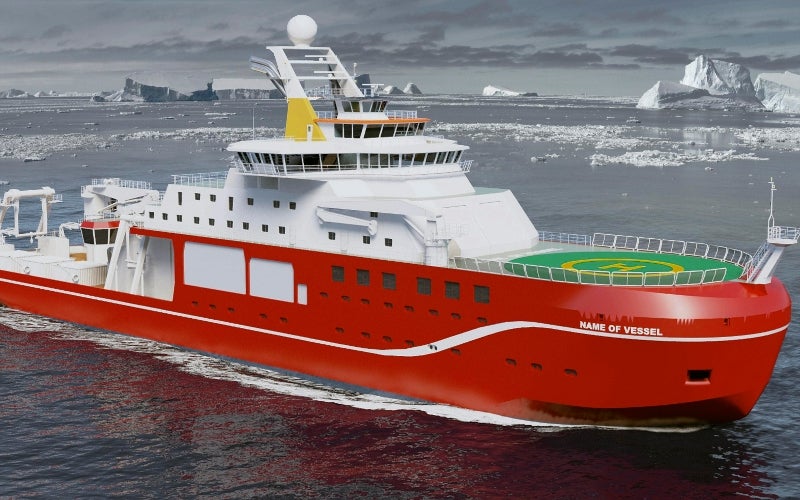
A new state-of-the-art polar research vessel is being built by Cammell Laird at Birkenhead Shipyard, UK, for the Natural Environment Research Council (NERC). Cammell Laird was selected to construct the vessel in October 2015, after a 12-month competitive tender process.
The Polar research vessel project is part of a $7.8bn investment to be made by the government in science infrastructure from 2015-21. The total cost required to complete the vessel is estimated to be $225.4m.
The steel cutting for the vessel is expected to take place in late 2016, and operations are expected to begin in 2019.
British Antarctic Survey (BAS) will operate the new research vessel, which will be made available to the entire UK research community including training postgraduates. It will replace NERC’s two icebreakers RSS James Clark Ross and RRS Ernest Shackleton.
The vessel will operate in regions of Antarctica and the Arctic. It will also resupply the five UK research stations, operated by BAS, based in the Antarctic.
Design details of the Polar research vessel
The vessel was designed by naval architects Houlder. It will be 129.6m-long and 25m-wide, and have a draft of 7.5m. The gross tonnage of the vessel will be 12,900t, and its total cargo volume will be 4,200m³.
The ship will have flexible laboratory space and accommodation facilities for 90 personnel, including 60 scientists and 30 crew members.
A hangar facility will be installed onboard, as well as a helideck with the capacity for two small helicopters. It will be the first UK-built polar research vessel to feature a helideck.
Scientific equipment aboard the new Polar research vessel
With 20 labs, stores and workshops onboard, NERC’s new Polar research vessel will be one of the most sophisticated floating research laboratories operating in the Polar regions.
The vessel can be fitted with a biological multi-frequency and multi-beam echo sounder, omni-directional or multi-beam sonars, a uniform straight bill of lading, a sub-bottom profiler, and a meteorological weather station.
It can also be upgraded with systems for positioning and telemetry, net monitoring, and shallow and deep swath bathymetry.
The vessel will be equipped with winching systems and a scientific moon pool for deploying and recovering large, remotely-operated and autonomous marine vehicles, such as the Autosub NERC submarine.
It will carry robotic submarines and marine gliders for collecting data on ocean conditions and marine biology.
The remotely-operated aerial vehicles and underwater monitoring systems aboard the vessel will provide detailed information about the surrounding polar environment. The gathered data will be delivered to on-board scientists to support research activities in Polar regions.
Enhanced satellite communication systems on the vessel will allow real-time transfer of data to and from the UK and end users.
Performance of NERC’s new Polar research vessel
The polar research vessel will be capable of breaking up to 2m-thick ice while travelling at a speed of 3kt.The transit speed of the vessel will be 13kt.
It will operate in icy seas for a maximum of 60 days and have a range of 19,000nmi.
Key players involved
In collaboration with the vessel’s project management office, Houlder Consultancy will provide technical advice while supporting the shipyard selection process, construction and delivery of the research vessel.










